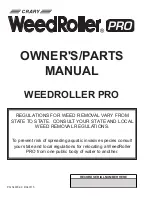
2-7
INSTRUMENTS AND CONTROLS
The IC-20-1K has a lower and upper instrument panel. The lower panel consists of the
standard engine display screen and controls. The display shows the electrical system
voltage, water temperature, oil pressure, hydraulic oil temperature, and fuel level. There
are controls for the gas/LPG functions, throttle, headlight switch, key switch horn button,
and transmission. A bubble level is mounted to the left of the panel for leveling the
crane. The ignition switch is key-operated and has START, RUN and OFF positions.
The ignition switch should always be turned off and the key removed when the vehicle is
left unattended.
At the top of the upper instrument panel, is the anti-two-block override key switch, and
below that is the hour meter.
A pedal-activated service brake is provided to assist slowing down on slopes. The foot
pedal activates hydraulic disc brakes mounted on each torque hub. The parking brake
is applied by actuating a toggle switch located on the lower right side of the transmission
control lever panel, and above it is the parking brake indicator light.
The hydrostatic transmission control lever is located to the right of the steering wheel.
Wait for boot-up, before starting the engine. Engine RPM is controlled on the display.
After the engine is started and the throttle is set, release the parking brake and move the
control lever smoothly until the desired speed is reached. Always operate this
transmission control lever smoothly. If lever is released while moving, the crane will stop
suddenly and may cause loss of control of load.
For maneuvering in tight quarters, the throttle should be set for low speed. For traveling
longer distances, the throttle may be set to full speed. The vehicle speed is controlled
by the transmission lever.
The hydrostatic transmission will normally stop the crane on a grade, but some oil will
slip through the wheel drive motors and allow the crane to creep. ALWAYS apply
parking brake when operating the crane, or leaving the crane unattended. Remember
the hydrostatic transmission is NOT a parking brake.
Be sure to release parking brake before moving the transmission control lever toward
forward or reverse.
The crane will “coast” on some downhill ramps when the surface is uneven, and one
wheel is raised off the ramp. The forward motion of the crane may not always be
satisfactorily controlled by the hydrostatic wheel drive motors under these conditions.
The foot brake can be applied if the operator feels the machine is traveling faster than
desired.
On other surfaces the crane may slow down or stop because one drive wheel is
spinning. The engine speed and/or transmission speed may be increased gradually to
resume motion.
Summary of Contents for IC-20-1K
Page 6: ...1 2 DIMENSIONS AND ORIENTATION IC 20 1K...
Page 7: ...1 3 TURNING DIMENSIONS...
Page 25: ...2 11...
Page 26: ...2 12...
Page 36: ......
Page 45: ...3 9 IC 20 LUBRICATION CHART...
Page 49: ...3 13 JIC SCHEMATIC...
Page 51: ...3 15 STEERING SYSTEM...
Page 53: ...3 17 IC 20 PROPULSION SYSTEM...
Page 63: ......
Page 64: ......
Page 65: ......
















































